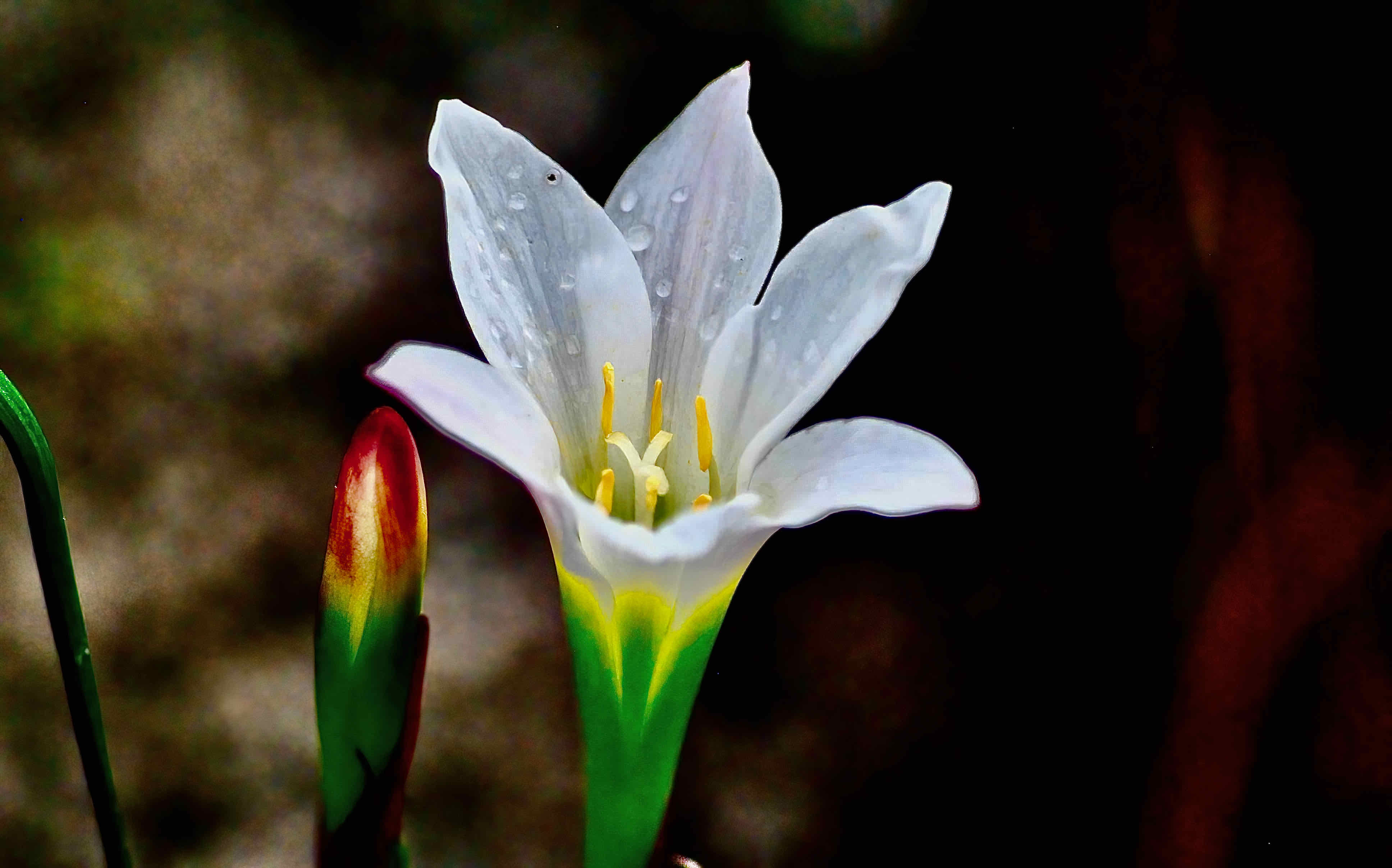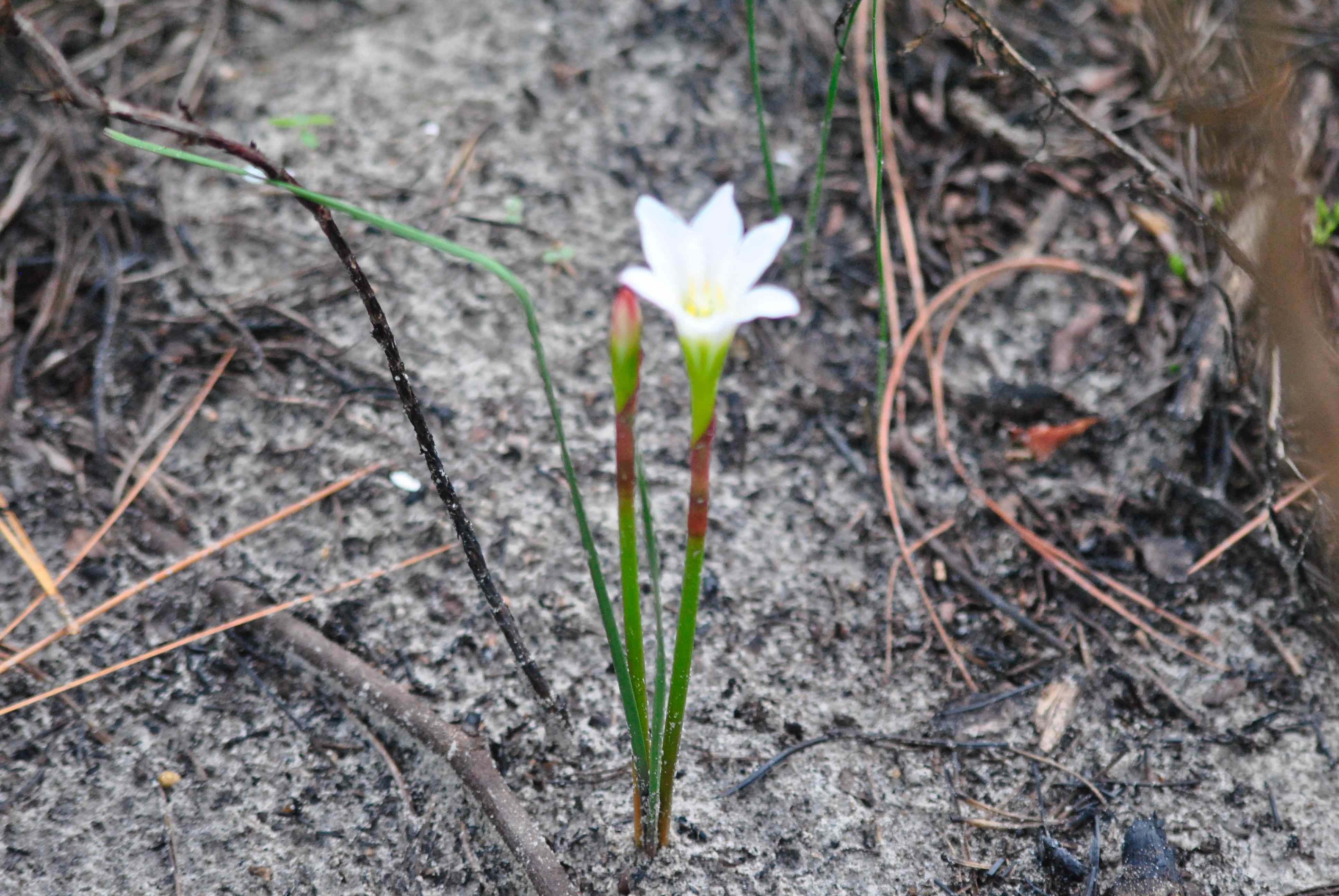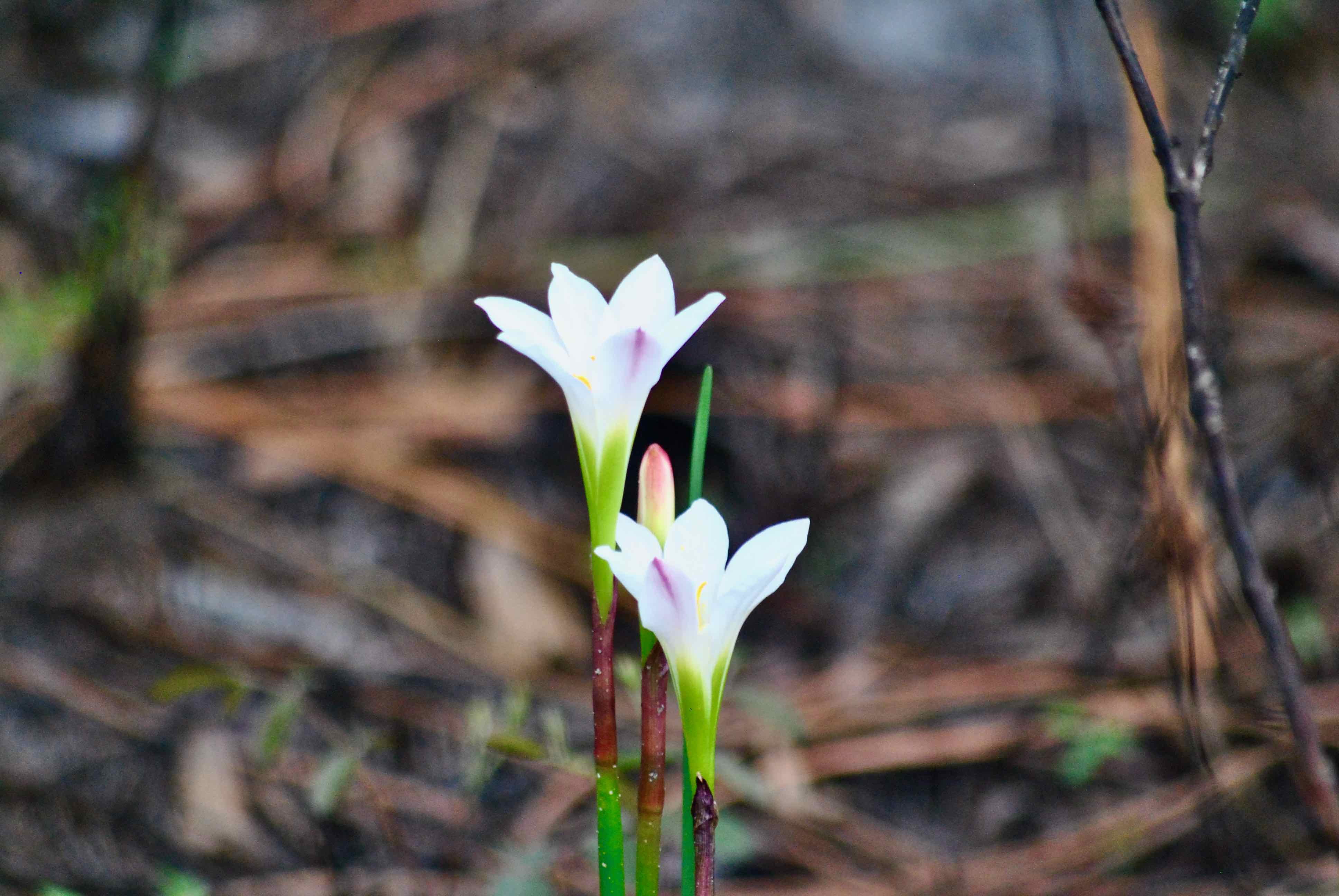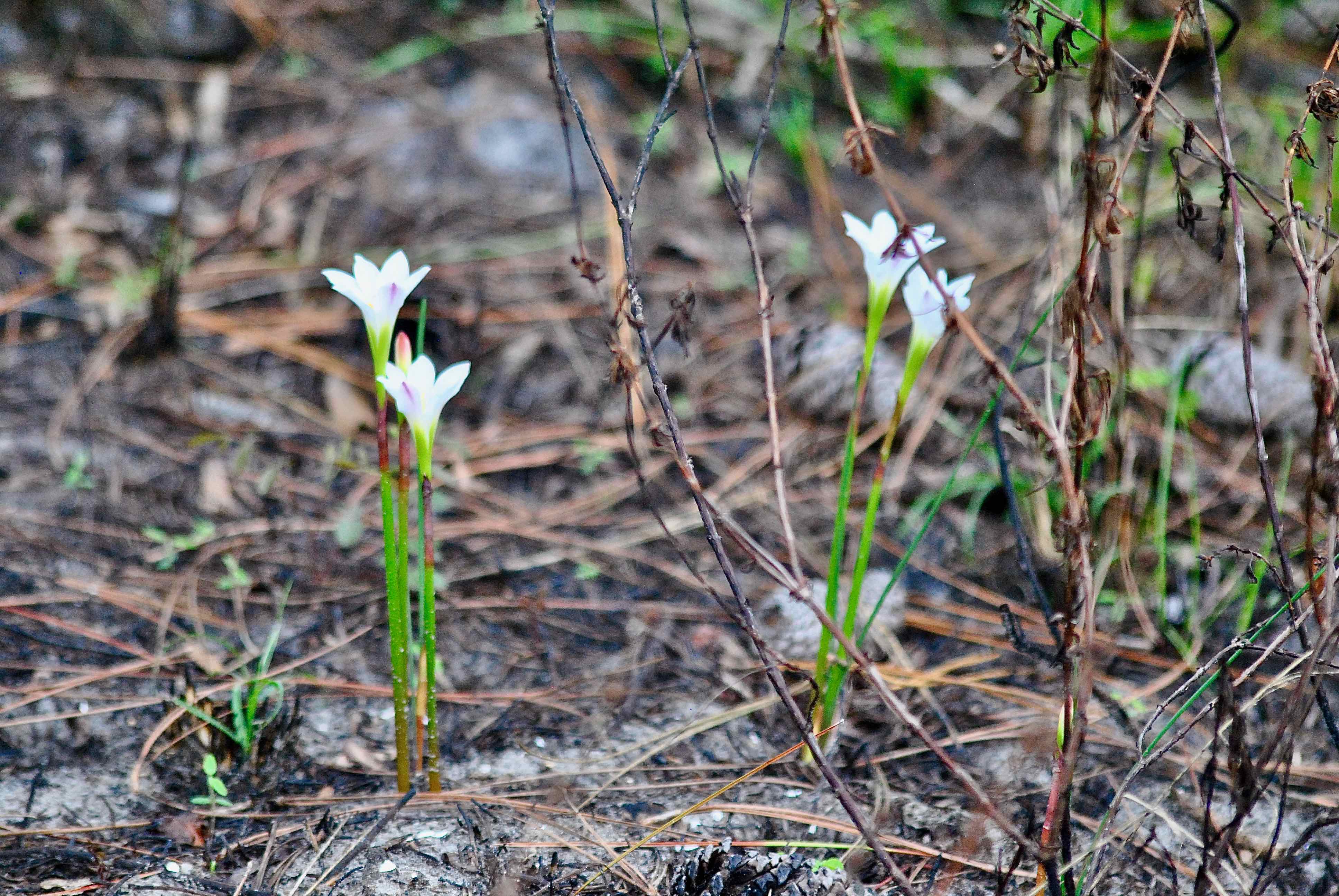
Rain lily, photographed at Dupuis Wildlife and Environmental Area, Canal Point, Martin County in September 2015.
Really, the only outstanding feature of the rain lily, Zephyranthes simpsonii, is its flower. But what a flower it has. Spectacular is a word that comes to mind.
There are more than 70 members of the Zephyranthes genus growing in the Western Hemisphere, but this is the only one native to South Florida. It is exceedingly rare, found in only three conservation areas within the region. It is a little more common in Central Florida than it is here, but state officials still legally classify it as threatened; the Institute for Regional Conservation lists it as imperiled in South Florida. The native range of the rain lily extends along the Atlantic and Gulf coastal plains from North Carolina to Mississippi. It apears to be common nowhere. In Georgia, there were two known populations of rain lily but neither has been seen in more than 50 years. But despite its rarity, rain lily is not federally protected.
As you might guess given its looks, rain lily has an underground bulb. It has long, thin leaves that can extend to a foot but are only an eighth of an inch wide. The flowers sit atop a foot-long stalk, are generally white but can have some pink or purple coloring, especially as they age. According to the literature, the plant blooms in late winter to mid-spring, but we found these plants blooming in early September. Cycles of dry and rain trigger the blooming. It goes dormant in winter, re-emerging in the spring.
Rain lilies grow in open pinelands, in sandy soil. The plants on this page were found growing in a part of Dupuis Wildlife and Environmental Area that recently was burned. Which brings up one of the threats to this plant's survival: fire suppression. The other major threat is loss of habitat from development and drainage of wetlands. Conversely, prescribed fires and protection of habitat are the major conservation measures to preserve the species.
Little is known about how the flowers are pollinated, but given the flower's structure it's believed they are self- and cross-pollinated by small bees and butterflies.
It is a cultivated plant in Florida but it isn't widely offered even though it reportedly is easy to grow from seed or bulb. Few, if any, nurseries in South Florida offer it for sale.
Rain lily is a member of Amaryllidaceae, the lily family. Some previously classified it under Liliaceae; the U.S. Department of Agriculture's PLANTS database still does. Other common names include Simpson's rain lily, Simpson's zephyrlily, redmargin zephyrlily, rain-lily and Florida atamasco-lily.
Zephyranthes, by the way, is a reference to the Greek god of the western wind, Zephyrus. Roughly translated zephyranthes means flower of the god of the western wind.
Dupuis Wildlife and Environmental Area



